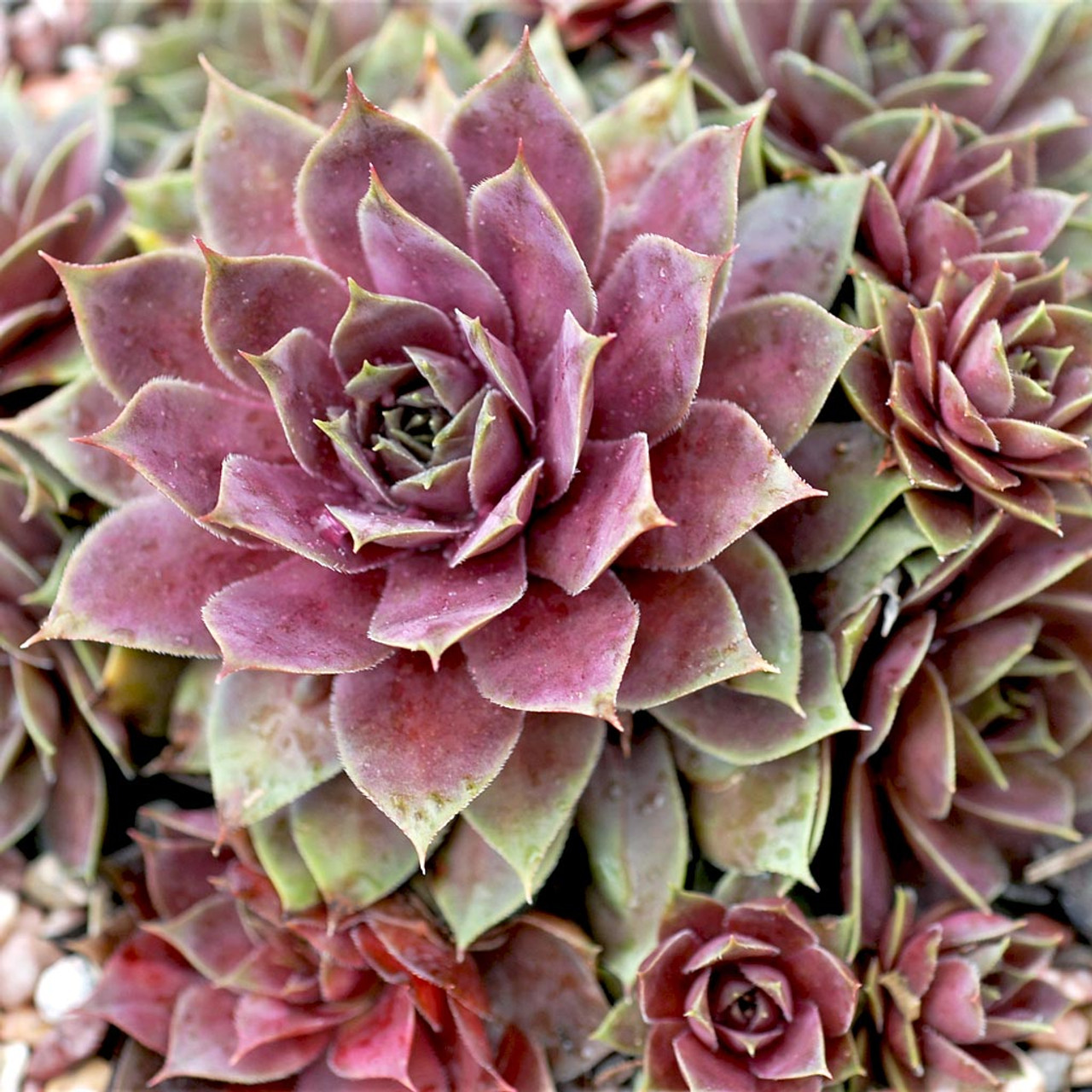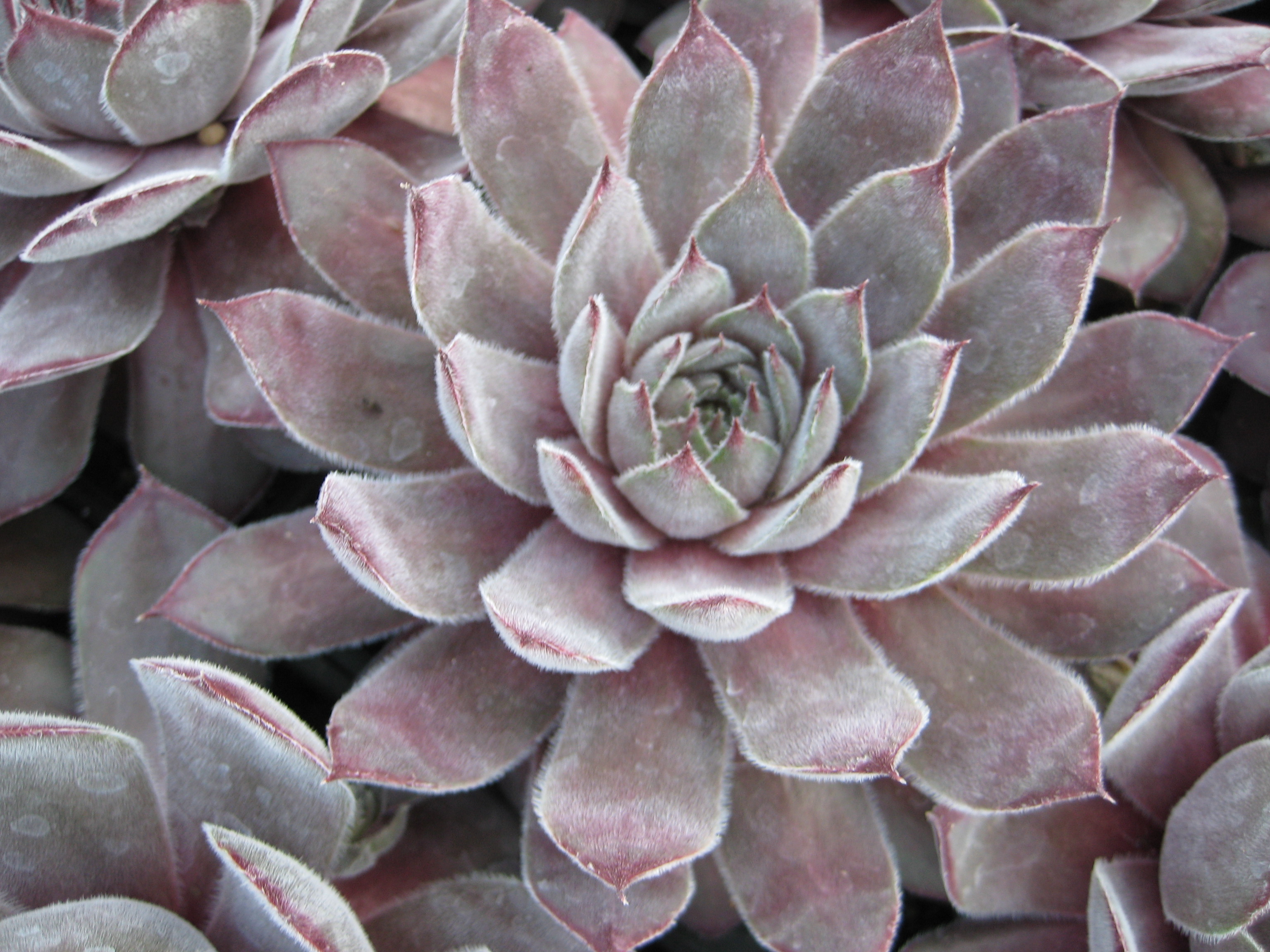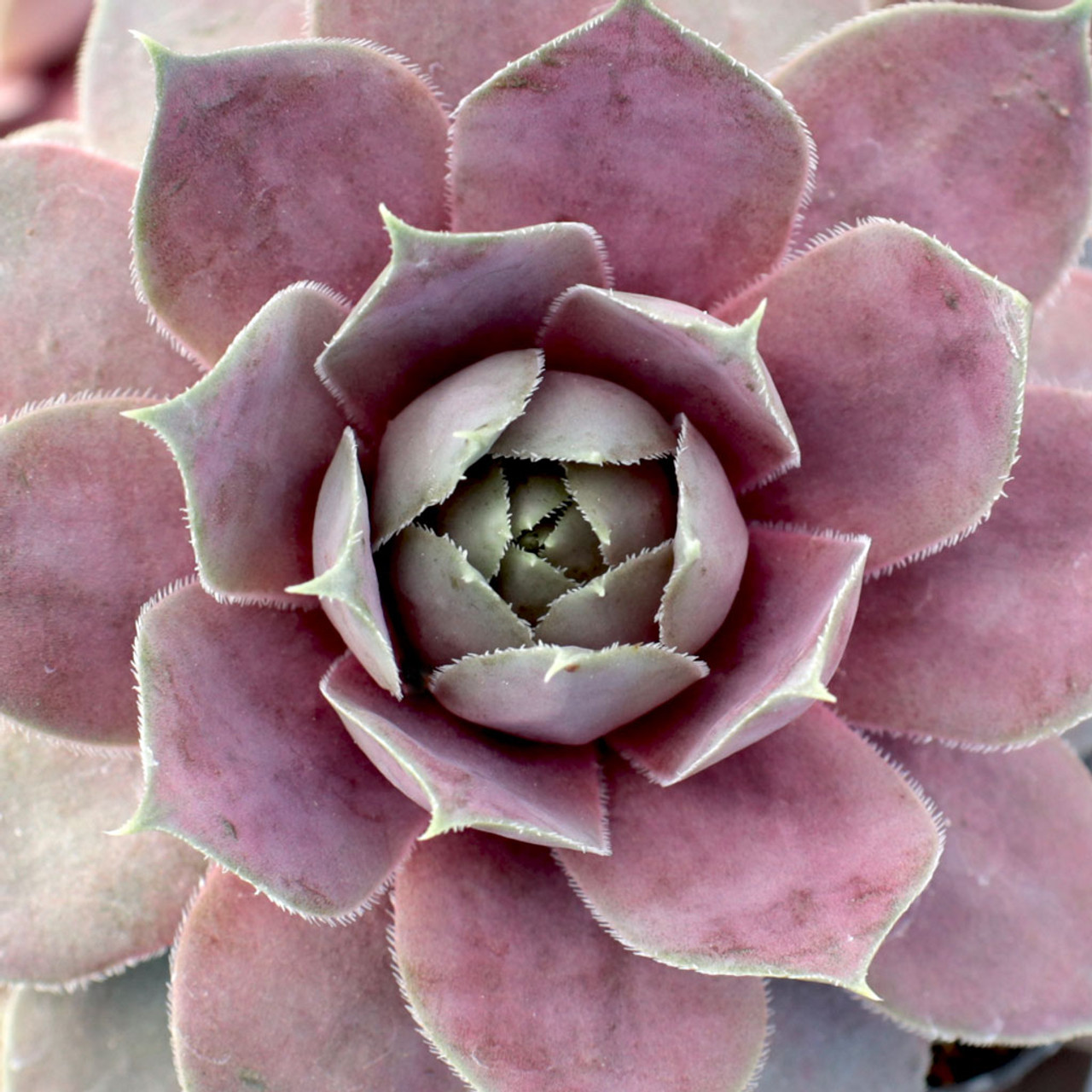This succulent is an attractive mix of pink and grey leaves that form a rosette when grown in direct sunlight. It is a hybrid of Sempervivum ‘Lilac Time’ and Sempervivum ‘Jungle Shadows’ and is monocarpic, meaning that it will eventually die after producing offsets for a few years. Its flowers, when they appear, are usually pink in color.
Table of Contents
Care and Propagation Information
Sempervivum ‘Pink Lotus’ will reach its full potential when exposed to cooler temperatures, or when grown in direct sunlight. It is not attractive to deer, and its blooms will bring in plenty of butterflies.
Watering
Sempervivum ‘Pink Lotus’ should be watered using the “soak and dry” technique, meaning that the soil should be allowed to dry out completely in between waterings. This is the typical watering requirement for succulents.
This succulent can survive the winter outdoors in an area with heavy snowfall without needing to be watered.
Be sure to grab a copy of our FREE watering cheat sheet, which will help you determine when your succulents need more water and how to save them if they are getting too much.
Where to Plant
The Pink Lotus is capable of surviving in low temperatures of up to -20°F (-28.9°C) and can thrive in direct or partial sunlight. However, when cultivated indoors, it loses its vivid color and becomes prone to stretching.
How to Propagate Sempervivum ‘Pink Lotus’
The Sempervivum ‘Pink Lotus’ is easy to propagate due to its numerous offsets; the “hen” (mother plant) will produce plenty of “chicks” (offsets), which can be removed and placed in pots or included in decorations.
Offsets
‘Pink Lotus’ can be propagated by cutting off small rosette offsets from the main stem. Use a clean, sharp knife or scissors for this purpose, then let the cuttings dry for 24-48 hours before placing them on soil that drains well.
This hybrid will not reproduce true to its parent plant when grown from seed.
Practical uses
Care and Propagation Information
General Care for Sempervivum ‘Pink Lotus’
Sempervivum ‘Pink Lotus’ will reach its full potential when exposed to cooler temperatures, or when grown in direct sunlight. It is not attractive to deer, and its blooms will bring in plenty of butterflies.
Watering
Sempervivum ‘Pink Lotus’ should be watered using the “soak and dry” technique, meaning that the soil should be allowed to dry out completely in between waterings. This is the typical watering requirement for succulents.
This succulent can survive the winter outdoors in an area with heavy snowfall without needing to be watered.
Be sure to grab a copy of our FREE watering cheat sheet, which will help you determine when your succulents need more water and how to save them if they are getting too much.
Where to Plant
The Pink Lotus is capable of surviving in low temperatures of up to -20°F (-28.9°C) and can thrive in direct or partial sunlight. However, when cultivated indoors, it loses its vivid color and becomes prone to stretching.
How to Propagate Sempervivum ‘Pink Lotus’
The Sempervivum ‘Pink Lotus’ is easy to propagate due to its numerous offsets; the “hen” (mother plant) will produce plenty of “chicks” (offsets), which can be removed and placed in pots or included in decorations.
Offsets
‘Pink Lotus’ can be propagated by cutting off small rosette offsets from the main stem. Use a clean, sharp knife or scissors for this purpose, then let the cuttings dry for 24-48 hours before placing them on soil that drains well.
This hybrid will not reproduce true to its parent plant when grown from seed.
Practical uses
Sempervivum ‘Pink Lotus’ is an ideal option for constructing a “green roof” due to its succulent nature.
FAQ
Does lotus have narcotic properties?
The Nymphaea caerulea, more commonly known as the blue lotus, was revered in ancient Egypt for its symbolic associations with life, immortality, and resurrection. This water lily has been known to contain narcotic alkaloids in both its roots and flowers, a fact noted as early as the Ebers papyrus (1550 BCE), a document that documented the medicinal and herbal knowledge of the era.
Does lotus have medicinal properties?
Lotus is known to contain substances that can reduce inflammation, destroy cancer cells and bacteria, lower blood sugar, facilitate fat metabolism, and guard the heart and blood vessels. It is also thought to provide protection for the skin, liver, and brain.
What are the medicinal properties of lotus seeds?
Lotus seeds possess a range of bioactive compounds, such as alkaloid, flavonoids, etc., which have shown to produce anti-inflammatory, anti-cancer and hypoglycemic effects. As a result, consuming lotus seeds may help lower the risk of developing certain chronic illnesses.
What are the effects of pink lotus?
It is said that pink lotus has a mild, consciousness-altering effect which can lead to a sense of serenity, help with pain relief, and provide a feeling of warmth and euphoria. Additionally, some say it can be beneficial to those seeking to deepen their meditation practice and find a sense of connection to the Earth.
What are the side effects of lotus?
Reimers cautions that lotus root consumption could lead to bad breath, fever, diarrhea, and liver complications. Though it boasts a number of health advantages, it’s important to speak with one’s physician before adding it to one’s diet too rapidly.



